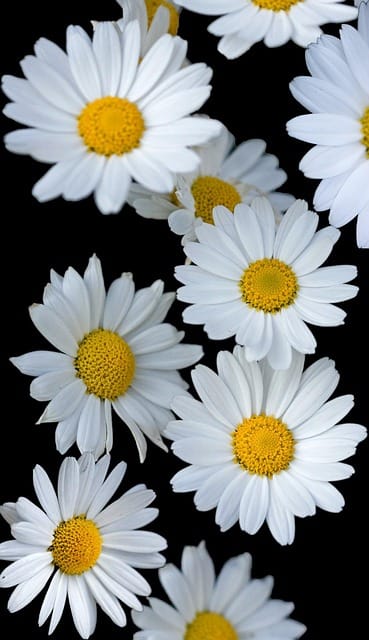How to grow Daisies
The daisy is a beautiful and vibrant flower that adds charm to any garden

In this article:
- Introduction
- Choosing the Right Variety of Daisies
- Preparing the Soil
- Planting Daisies
- Watering and Fertilizing
- Providing Sunlight
- Mulching and Weed Control
- Disease Prevention and Treatment
- Pruning and Deadheading
- Propagation of Daisies
- Overwintering Daisies
- Attracting Pollinators
- Common Pests and Pest Control
- Harvesting and Using Daisies
- Frequently Asked Questions
- Conclusion
Introduction
Growing daisies is a rewarding experience for both experienced gardeners and beginners. These beautiful flowers can brighten up any garden with their vibrant colors and delicate petals. In this article, we will guide you through the process of growing daisies, from choosing the right variety to harvesting and using them.
Choosing the Right Variety of Daisies
Daisies come in various types, including Shasta daisies, African daisies, and English daisies. Each variety has its own unique features and grows best in specific growing conditions. Consider factors such as climate, sunlight requirements, and soil type when selecting the daisy variety that suits your garden.
Preparing the Soil
Daisies prefer well-draining soil with a pH level between 6.0 and 7.5. Before planting, prepare the soil by removing any weeds, rocks, or debris. Loosen the soil with a garden fork or tiller and incorporate organic matter such as compost or aged manure to improve soil fertility and moisture retention.
Planting Daisies
Plant daisies during the spring or fall seasons. Dig a hole slightly larger than the root ball of the daisy plant. Place the plant in the hole, ensuring that the crown is level with the soil surface. Backfill the hole with soil, gently firming it around the plant. Water thoroughly after planting.
Watering and Fertilizing
Water daisies regularly, especially during dry spells, to keep the soil evenly moist. Avoid overwatering, as it may lead to root rot. Apply a balanced fertilizer every four to six weeks during the growing season to promote healthy growth and abundant blooms.
Providing Sunlight
Daisies thrive in full sun to partial shade. Ensure that they receive at least six hours of direct sunlight daily. If you live in a region with hot summers, provide afternoon shade to protect the plants from extreme heat.
Mulching and Weed Control
Apply a layer of organic mulch, such as wood chips or straw, around the base of daisies. Mulching helps retain soil moisture, suppresses weed growth, and regulates soil temperature. Regularly monitor the garden for weeds and remove them promptly to prevent competition for nutrients and water.
Disease Prevention and Treatment
To prevent diseases, ensure good air circulation around the daisy plants by spacing them appropriately. Avoid overhead watering to minimize the risk of fungal infections. Regularly inspect the plants for any signs of diseases or pests and promptly treat them using organic pest control methods if necessary.
Pruning and Deadheading
Deadhead faded flowers regularly to encourage continuous blooming and maintain a neat appearance. Prune daisy plants in early spring or late fall to remove any dead or damaged foliage. This promotes vigorous growth and prevents the spread of diseases.
Propagation of Daisies
Daisies can be propagated through division or by taking stem cuttings. Divide mature plants every two to three years in early spring or late fall. Take stem cuttings from healthy plants in late spring or early summer and root them in a well-draining medium.
Overwintering Daisies
Some daisy varieties are hardy perennials and can survive winter conditions. Apply a layer of mulch around the base of the plants to protect the roots from freezing temperatures. In areas with severe winters, consider bringing potted daisies indoors or cover them with frost blankets.
Attracting Pollinators
Daisies are excellent plants for attracting pollinators such as bees and butterflies to your garden. Create a pollinator-friendly environment by planting other nectar-rich flowers nearby, providing a water source, and avoiding the use of pesticides.
Common Pests and Pest Control
Common pests that may affect daisies include aphids, slugs, and snails. Monitor your plants regularly and take immediate action at the first sign of infestation. Use organic pest control methods such as handpicking, applying insecticidal soap, or introducing beneficial insects like ladybugs.
Harvesting and Using Daisies
Harvest daisies during the early morning when the flowers are fully open. Cut the stems at an angle just above a leaf node and place them in a vase filled with water. Daisies can be used in floral arrangements, dried for crafts, or to make herbal teas and infusions.
Frequently Asked Questions
Q: How often should I fertilize daisies?
A: Apply a balanced fertilizer every four to six weeks during the growing season.
Q: Can I grow daisies in containers?
A: Yes, daisies can be grown in containers, provided they have adequate drainage and receive enough sunlight.
Conclusion
Growing daisies can bring beauty and joy to your garden. By selecting the right variety, providing proper care, and being attentive to their needs, you can enjoy vibrant blooms year after year. Follow the guidelines mentioned in this article, and soon you will have a garden filled with the cheerful beauty of daisies.
